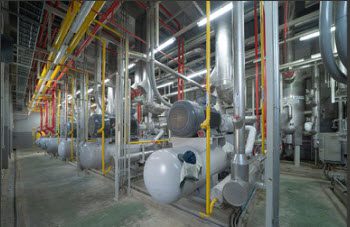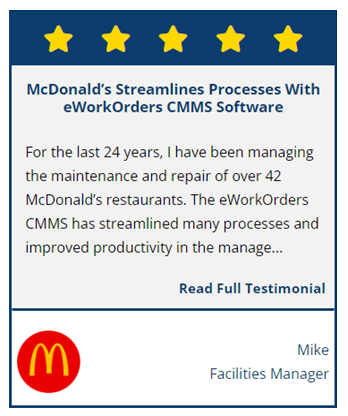 Chillers are crucial for achieving the necessary temperatures for a variety of industrial operations, which results in high energy consumption in these facilities. In order to enhance system performance, guarantee a long lifespan, and reduce energy costs, operators must prioritize the proper operation and maintenance approach. This article lists typical chiller issues, offers fixes, and emphasizes useful troubleshooting advice.
Chillers are crucial for achieving the necessary temperatures for a variety of industrial operations, which results in high energy consumption in these facilities. In order to enhance system performance, guarantee a long lifespan, and reduce energy costs, operators must prioritize the proper operation and maintenance approach. This article lists typical chiller issues, offers fixes, and emphasizes useful troubleshooting advice.
Three common causes of chiller issues include improper chiller sizing, improper operating procedures, and careless maintenance. Operators must therefore carefully take these aspects into account to reduce any potential risks to the cooling system.
The following are some typical chiller issues and possible solutions that can be managed more efficiently using maintenance software:
Maintenance Neglect
Operators may fail to follow recommended maintenance procedures, which harms chillers’ overall performance and results in excessive energy use. Operators are responsible for ensuring efficient maintenance, which includes appropriate equipment diagnostics utilizing operating records. In order to determine their state and plan for preventative and corrective maintenance, chiller units also need to undergo routine inspections.
Improper Operation
The manufacturer’s instructions for correctly operating industrial chillers are included in the manuals that come with them. Operators must abide by these rules since bad operating procedures reduce the effectiveness and lifespan of the equipment. Even if incorrect practices may not stop these cooling systems from functioning, it is noteworthy that the systems grow more prone to expensive and serious problems. Implementing training programs on proper chiller operation and maintenance as well as effective chiller maintenance programs is necessary to mitigate this threat.
Incorrect Sizing
The sizing of chillers is crucial when establishing cooling systems in industrial buildings. Inadequate airflow and inefficient cooling may result from undersized equipment. On the other hand, oversizing severely limits low-load operations and raises operating expenses. To determine whether existing chillers are appropriate for the common cooling loads, operators must evaluate their cooling capability.
Some Common Issues
Despite appropriate operation and routine maintenance, chillers are nonetheless susceptible to damage because of aging or deterioration. Operators can detect the likely problem prior to chiller repairs by understanding common initial troubleshooting techniques.
Chiller Won’t Start
There are several possible reasons why a chiller may not start. Some common causes include:
- Electrical problems: If there is an issue with the electrical supply, such as a loose wire, blown fuse, or tripped circuit breaker, the chiller may not turn on.
- Control system problems, such as a broken control panel or thermostat, could prevent the chiller from starting.
- Problems with the refrigerant system, such as low refrigerant levels or a leak, could prevent the chiller from starting.
- Problems with the compressor, such as a failing motor or a seized compressor, may prevent the chiller from starting.
- Mechanical problems: If there is a mechanical problem, such as a broken part or damaged belt, the chiller might not start.
To stop further damage and make sure the chiller is running properly, it’s critical to find and fix the root cause of the problem if the chiller won’t start. It could be required to call a professional for repair in some circumstances.
Inadequate Pumping
Inadequate pumping can cause a chiller to not work properly. These elements can greatly hinder the refrigeration cycle’s ability to flow coolant adequately. Here are some possible causes of inadequate pumping and how to address them:
- Low flow rate: A pump’s flow rate may not be sufficient to circulate enough refrigerant to adequately cool the chiller. Check the pump for any obstructions or constraints and make sure it is the right size for the chiller to solve this issue.
- Pump failure: If the pump has failed, the chiller won’t operate correctly since it can’t circulate refrigerant. The pump will need to be fixed or replaced to solve this issue.
- Pump seals that are worn or damaged may allow refrigerant to leak and prevent the pump from circulating enough refrigerant to effectively cool the chiller. The pump seals will need to be fixed or changed to solve this issue.
- Insufficient refrigerant circulation: If the pump speed is not set correctly, it may not be able to adequately cool the chiller. If necessary, change the pump’s speed to resolve this issue.
Inadequate pumping can make the chiller malfunction, so it’s crucial to find and fix the root problem as soon as possible to save further damage and make sure the system is functioning effectively. It could be required to contact a professional for repair if you are unable to resolve the issue.
Inadequate Cooling
By measuring the coolant’s temperature at the chiller outlet, operators can troubleshoot this issue. A temperature that deviates from the norm for the process points to an iced-up evaporator or deteriorating coolant fluid. There are several possible causes of inadequate cooling in a chiller. Here are some potential causes and how to address them:
- Low refrigerant levels: The chiller won’t be able to cool efficiently if the refrigerant levels are too low. Check the refrigerant levels and replace them as necessary to solve this issue.
- Compressor failure: If the compressor has failed, the chiller won’t be able to cool efficiently since it won’t be able to circulate refrigerant. The compressor will need to be fixed or replaced in order to solve this issue.
- Condenser coils that are unclean or clogged can make it harder for the chiller to effectively dissipate heat, which could result in improper cooling. Condenser coils must be cleaned or changed to resolve this issue.
- Incorrect thermostat setting: The chiller may not be able to maintain the desired temperature if the thermostat is not set to the proper temperature. Adjust the thermostat setting as necessary to solve this issue.
- Airflow problems: The chiller may not be able to circulate cool air adequately if there are airflow problems, such as blocked air filters or damaged ducting. Clean or replace the air filters, and address any broken ductwork, to solve this issue.
Numerous problems can result in inadequate cooling, so it’s crucial to find and fix the root of the issue as soon as you can to stop further damage and make sure the appliance is working properly. It could be required to contact a professional for repair if you are unable to resolve the issue.
Environmental Conditions
Due to modifications to the process or changes in the surrounding temperature, the chiller may be under too much load. Similarly, a change in the chiller’s position (near other heat-generating equipment or farther from the process equipment); loose, damaged, or missing insulation on the pipes between the chiller and the process; or even changes in line voltage may be impairing the chiller’s ability to remove heat.
Other Common Chiller Faults
The majority of modern chillers show a fault or error code when performance-impairing situations are found. such codes are typically very specific and will speed up the process of problem diagnosis. These are a few of the more typical alarms and faults:
- Warning of Low Temperature: The process temperature has dropped below the temperature value that the user established. This can be caused by an inadequate heat load or a low-temperature alarm set too high.
- Warning of High Temperature: The process temperature has exceeded the temperature limit that the user selected. This can be a result of a high heat load or a low high-temperature alarm setting.
- Safety Alarm for Over-Temperature: Indicates that the process temperature has surpassed a safety cutoff that has been specified by the manufacturer or the user. A refrigeration system issue or a safety setting that is too low in temperature could be to blame for this.
- Warning for Low Liquid Level: The reservoir no longer contains an adequate amount of coolant. Leaks in the circulation system or evaporation could be to blame for this.
Types of Chillers
Some of the most common chillers include:
Air-cooled chillers: Air is used by these chillers to remove heat from a system or process. They are frequently utilized in circumstances where there is not enough room or where water is not easily accessible for cooling.
Water-cooled chillers: These chillers use water to cool a system or process. They need a water source and a way to get rid of the heated water, but they are more efficient than air-cooled chillers.
Evaporative chillers: These chillers remove heat from a procedure or system by causing a liquid (like water) to evaporate. They are frequently utilized in arid or dry regions when the surrounding air is generally chilly and dry.
Absorption chillers: To remove heat from a system or process, these chillers employ a chemical absorption mechanism. As they may be fueled by a number of energy sources, they are frequently employed in applications where electricity is not easily accessible (such as natural gas or solar energy).
Screw chillers: These chillers remove heat from a system or process by compressing and expanding a refrigerant using a screw-type compressor. They are renowned for being highly effective and dependable.
Vapor Compressor chillers: Vapor compressor chillers use a compressor to pump refrigerant which extracts unwanted heat from a process. The components of the system are the same as in the absorption type – we have an evaporator, a condenser, and an expansion unit. However, there is no absorbent medium in the unit.
The Solution – Preventive Maintenance
A software tool that can be used to organize maintenance duties and operations for chillers and other equipment is called a computerized maintenance management system (CMMS). A CMMS can assist in managing chiller issues in a number of ways, including:
Routine inspections, cleaning, and other preventative maintenance operations for chillers can be scheduled using a CMMS, and they can be tracked. This can assist in spotting and resolving possible issues before they arise.
Used to record maintenance operations, including the type of work done, the components and materials used, and the outcomes of any diagnostic tests. Maintenance activities can then be analyzed. With the use of this data, trends can be analyzed and recurrent problems that may require attention can be found.
Create work orders for maintenance jobs and send warnings to the proper staff when they are approaching their due dates or when problems are found. This can make sure that maintenance jobs are finished on time and that any problems are fixed right away.
Providing real-time visibility into maintenance activities: A CMMS can provide real-time visibility into the status of maintenance tasks and equipment, allowing maintenance staff to quickly identify and address any issues that arise.
Giving maintenance staff real-time visibility into maintenance activities: A CMMS can give maintenance workers real-time visibility into the status of maintenance jobs and equipment, enabling them to see and resolve any problems as they develop.
